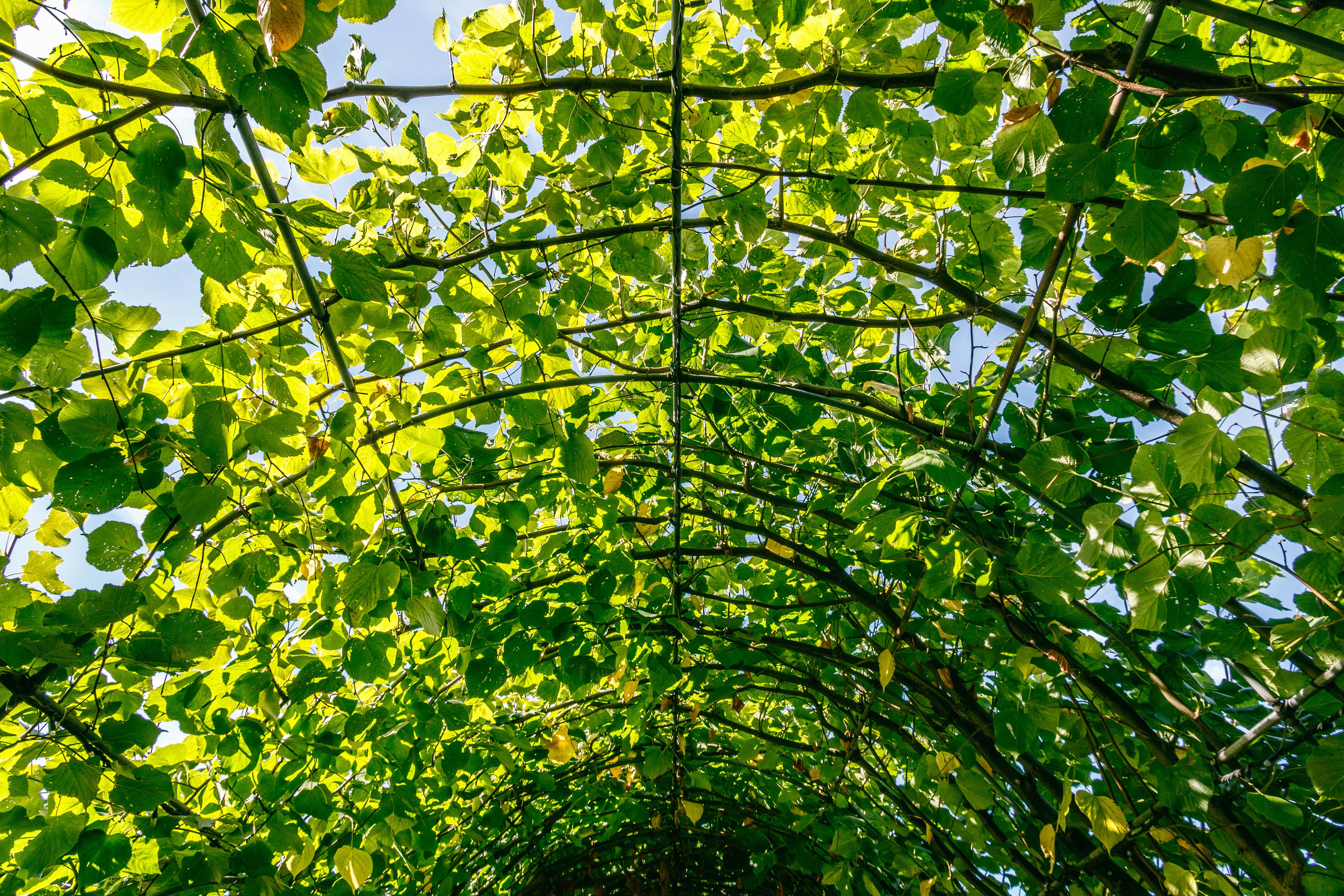Pergolas were traditionally and historically decorated with climbing plants. They provided shade for the paths of gardens and parks while decorating the landscape. Becoming more modern and stylish over the years, pergolas remain a highly appreciated support for climbing vines. But how do you prune a climbing vine to enable it to flourish on a pergola?
What is a climbing vine?
A climbing vine is a deciduous climbing plant. It flowers very little but offers an evolution of flamboyant colours over the seasons. Before they fall in winter, its green leaves change to purple and then scarlet for a magnificent finale.
Its small adhesive pads enable it to cling to and easily wrap around the support you provide it.
Very easy to cultivate, this climber grows quickly and requires very little care. An occasional pruning is enough. The other advantage of a vine on a pergola is that by covering the roof and the trellis it becomes a perfect insulation for your leisure area. This exterior space is protected from the sun and bad weather, and the heat is much more gentle. A climbing vine even enables you to reduce background noise by muffling echoes in its foliage!
The ideal moment to prune your climbing vine
As we saw above, pruning is the only necessity when you grow a climbing vine on a pergola. You planted it according to the rules, i.e. from the month of March, after the frost. You have correctly guided it with stakes and trellises. Now it's time to prune your climber!
Ideally, you should prune your climbing plant twice a year, after the frost and summer fruiting.
In winter, the vine is dormant and saves its energy. The sap descends and is concentrated in its vital parts. Pruning it during this period influences the quality of the foliage and the abundance of fruit.
Summer pruning is lighter. It is carried out between June and the end of July and enables you to thin the foliage, giving the vine strength and all the benefits of exposure to sunshine. By limiting the number of clusters to a maximum of 5 per shoot, trimming barren shoots and eliminating all the little clusters, you help your vine to fructify and flourish.
How do you go about pruning a climbing vine?
The year you plant your vine, it is enough to simply prune two buds, also called 'eyes'. Then you will obtain shoots from the stump. You can then trail them over the post of your pergola by attaching them as they grow. The climbing vine will then try to cover the roof of your pergola, and you will have to guide the shoots horizontally.
From the second year, use pruning shears to cut away the dead wood and then eliminate the shoots that grow at its base to make room for new shoots.
If your vine has fructified, cut off all the old branches that have borne fruit clusters. For better healing, leave a distance of 5 mm from the base of the main limb.
Secondary branches are to be pruned after the second or third eye.
What plant can be associated with a climbing vine for a pergola?
A climbing vine flowers rarely, or even exceptionally! That is why pairing it with another climber that provides a beautiful bloom is an excellent idea. Among the climbing plants that adapt easily is the clematis. It forms small pink, mauve or white flowers. The sweet pea is also very easy to care for and offers a variety of countryside colours. Finally, the passion flower is a climber with unusual flowers. Its blossoming ends in mid-autumn, when the vine's foliage changes to purple and red.


